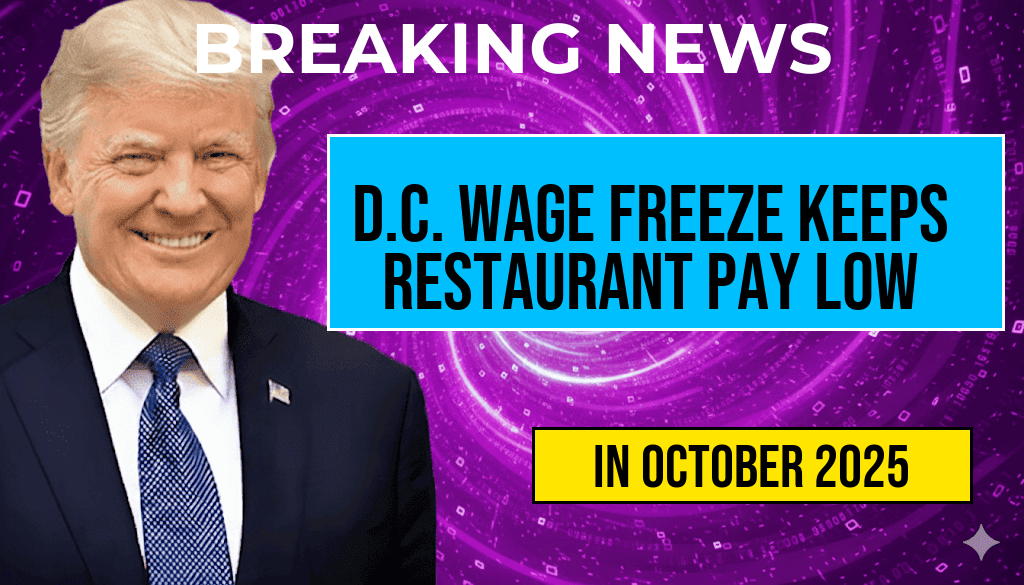The District of Columbia’s decision to maintain the current wage freeze for restaurant workers means that many will continue to earn an hourly wage of $10. This figure falls significantly short of the $12 per hour that advocates argue is necessary for a living wage in a city where the cost of living is among the highest in the nation. The gap of $4,160 per year could have serious implications for the livelihoods of service industry employees, particularly as inflation and rising expenses continue to strain household budgets. As the city grapples with economic recovery post-pandemic, the wage freeze raises questions about support for low-income workers in an industry still feeling the effects of the health crisis.
Understanding the Wage Freeze
The D.C. Council’s decision to keep the minimum wage for tipped employees, which includes many restaurant workers, at $10 has sparked debates among stakeholders. This freeze has been in place amid ongoing discussions about how best to support workers in the hospitality sector. The rationale behind the freeze, as stated by some officials, is to allow businesses time to recover financially from the pandemic.
Current Wage Landscape
As it stands, the current wage structure for restaurant workers in D.C. is as follows:
| Type of Worker | Current Hourly Wage | Proposed Minimum Wage | Annual Shortfall |
|---|---|---|---|
| Tipped Employees | $10 | $12 | $4,160 |
With the current wage set at $10, tipped employees are significantly underpaid compared to the proposed minimum wage. This creates a disparity that affects not just workers but also the overall economy of the area.
Impact on Workers
For many restaurant workers, the $10 wage translates into financial struggles. According to a recent report from the Economic Policy Institute, a full-time worker at $10 per hour would earn approximately $20,800 annually, which is insufficient to cover the basic living expenses in D.C. This has led to rising concerns among labor advocates about the sustainability of such low wages.
Advocacy and Responses
- Labor groups are lobbying for an increase in the minimum wage to align with the rising cost of living.
- Some restaurant owners argue that raising wages could lead to higher menu prices, potentially alienating customers.
- Community organizations are working to support workers through food assistance programs and financial counseling.
The disparity between the current wage and the proposed minimum wage has prompted responses from various advocacy groups. They argue that without a wage increase, workers will continue to face economic hardships, which could lead to higher turnover rates in the industry and a reduced quality of service.
Looking Ahead
The future of wage policy in D.C. remains uncertain. As the city continues to recover economically, the council will likely revisit wage discussions. Workers and advocates are pushing for a more equitable wage structure that reflects the realities of living and working in the nation’s capital.
The ongoing debates over the wage freeze reflect larger national conversations about worker rights and living wages. As cities across the United States grapple with similar issues, the outcome in D.C. may serve as a bellwether for other jurisdictions considering adjustments to their wage policies.
For more information on minimum wage laws and living wage studies, you can refer to the Minimum Wage Wikipedia page or the Economic Policy Institute.
Frequently Asked Questions
What is the current wage for restaurant employees in D.C.?
The current wage for restaurant employees in D.C. is $10 per hour, which is $4,160 short of the targeted $12 per hour.
Why is there a wage freeze in D.C. for restaurant workers?
The wage freeze was implemented to maintain the current pay levels amidst economic challenges, affecting the ability of workers to reach the proposed $12 per hour standard.
How does the D.C. wage freeze impact workers financially?
The wage freeze results in restaurant workers earning $4,160 less annually compared to what they would earn if the wage were set at $12 per hour, affecting their overall financial stability.
When was the decision to freeze wages made?
The decision to freeze wages for restaurant workers in D.C. was made recently, reflecting ongoing discussions about fair compensation and economic conditions in the area.
What are the potential implications of maintaining the wage at $10 per hour?
Maintaining the wage at $10 per hour may lead to increased financial strain on workers, potentially impacting the quality of service in restaurants and the overall health of the industry in D.C.






